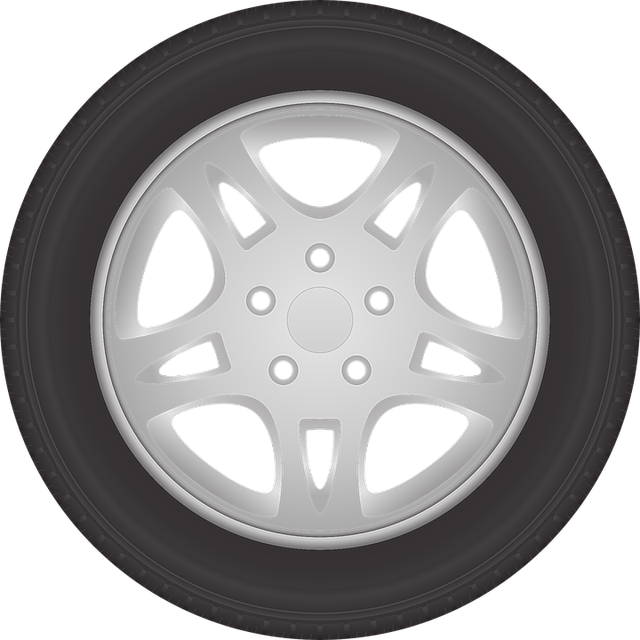Looking to register your car in California? This comprehensive guide walks you through every step, from understanding key requirements to completing the process efficiently. Discover the importance of a Vehicle Identification Number (VIN) verification—a crucial step ensuring your vehicle’s authenticity. Learn where and how to register, gathering all necessary documents along the way. Optimize your experience by following tips on timing and choosing approved locations or agents.
- Understand California Car Registration Requirements
- Gather Necessary Documents for Vehicle Registration
- Perform VIN Verification: Steps and Importance
- Choose an Approved Registration Location or Agent
- Complete the Registration Process: Tips and Timeline
Understand California Car Registration Requirements

Before registering your car in California, it’s crucial to understand the state’s specific requirements. One key aspect is ensuring your vehicle’s Vehicle Identification Number (VIN) is accurately verified. This process, known as VIN verification, checks that your car’s information matches records from the manufacturer and helps prevent fraud. In California, you’ll need to present a valid, current registration from another state or country, along with other necessary documents like proof of insurance and vehicle ownership.
Additionally, consider leveraging mobile VIN verification services. These convenient options allow for a swift and efficient inspection of your car’s history, including details about accident reports, title records, and maintenance schedules. A reliable mobile vin verifier can be a game-changer, especially when dealing with bureaucratic red tape. Ensure the service you choose is reputable to guarantee an accurate and secure process.
Gather Necessary Documents for Vehicle Registration

Before you start the registration process, ensure you have all the essential documents required by the California Department of Motor Vehicles (DMV). The key document is the Vehicle Identification Number (VIN) verification report. This can be obtained through a mobile VIN verifier or by conducting a VIN inspection yourself. The former involves using a digital tool to capture and transmit the VIN data, making it a convenient option for many. Alternatively, you can perform a manual VIN inspection by locating the VIN on the vehicle’s registration certificate, engine, or chassis, and then cross-referencing it with official records.
Other documents you’ll need include proof of ownership (either a title or bill of sale), current insurance papers, and a valid driver’s license. It’s crucial to check the DMV’s website for any additional requirements or updates, as they may vary depending on your specific circumstances.
Perform VIN Verification: Steps and Importance

Performing a VIN (Vehicle Identification Number) verification is a crucial step in the car registration process in California. This involves checking the vehicle’s history and ensuring its authenticity to prevent fraud and ensure road safety. The process typically starts with obtaining the vehicle’s VIN from the dashboard or the driver’s side door post. Then, you can utilize services like mobile vin inspection or visit designated centers for a formal vin verification.
During this verification, crucial data points are checked against national databases, including previous ownership records, accident history, and outstanding recalls. It’s essential to opt for reputable providers offering accurate and reliable mobile vin verification or traditional inspections to avoid any discrepancies that might delay your registration. This step is vital to ensure the car you’re registering is safe and legal, preventing potential issues down the line.
Choose an Approved Registration Location or Agent

When registering your car in California, one crucial step is to select an approved registration location or agent. The state offers various options, including Department of Motor Vehicles (DMV) offices and authorized third-party agents. It’s essential to choose a reliable source for accurate and efficient service. Many licensed agents provide convenient services like mobile vin inspection or a mobile vin verifier, allowing you to complete the process at your convenience.
Consider using these resources for a seamless experience. With the help of advanced technology, some providers even offer remote vin verification, ensuring that all necessary details are checked before registration. This step is vital for maintaining vehicle records accurately and avoiding potential issues in the future.
Complete the Registration Process: Tips and Timeline

Completing your car’s registration process in California involves several steps, and understanding the timeline is crucial to ensure a smooth experience. Once you’ve gathered all the necessary documents, including proof of insurance, a valid driver’s license, and the vehicle’s title, it’s time to move onto the key stages.
A critical aspect is the VIN (Vehicle Identification Number) verification process. You can opt for a traditional vin inspection at a designated center or leverage modern solutions like a mobile vin verifier. This step ensures the vehicle’s history is clear and helps in identifying any potential issues. After successful VIN verification, you can proceed with filling out the registration forms and submitting them to the California Department of Motor Vehicles (DMV). Timely submission guarantees your car will be registered promptly, ensuring you’re legal on California’s roads within a few business days.
Registering a car in California is a straightforward process that requires understanding specific requirements and gathering essential documents. After ensuring your vehicle meets all standards, including a crucial VIN verification step, you can choose an approved registration location or agent to complete the formalities. By following these steps and adhering to the timeline, you’ll have your California car registration taken care of promptly, enabling you to hit the road with confidence.



